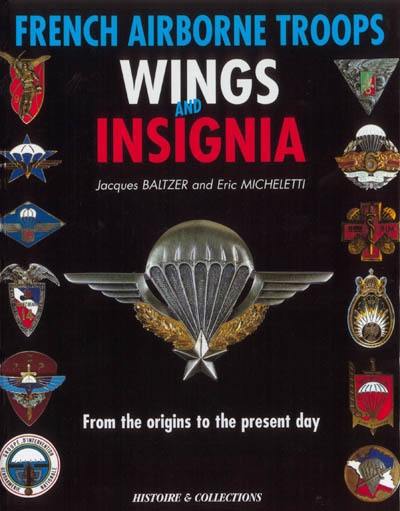
Paru le 15/10/2001 | Relié 192 pages
Tout public
The aim of this book is not to introduce you to the ever so rich history of the French Airborne units. This has been done before in a very good and well-documented way.
We have noticed however that since Christian Malcros' excellent book on airborne insignia and wings come out in 1983, nothing else has been published. There is however a demande from French and foreign collectors, all the more so as the number of insignia has tripled : indeed, there were 700 at that time, now there are now 3 000.
There is a real trend towards inflation in new insignia ; this is explained on the one hand by the demand from units, each wanting its own insignia after an overseas operation and on the other, by the proposals from the manufacturers continually presenting new insignia designs.
Production is of course uneven and depends on the unit's demands, ranging from the prototype, of which only a few are produced (these are rare but not are highly-rated by collectors if they have not been taken up by the units), to those produced by the hundreds for military service units, e.g. 1st and 9th RCP (there are forty variants for this unit's insignia !), the 6th RPIMa or the ETAP.
Production was large over the last thirty years in order to supply the regular contingents of conscripts, and has now necessarily been reduced in line with the professionalisation of present-day armed forces. If the majority of unit insignia are reasonably priced, some do fetch considerable sums. Hence the problem of re-issues and copies. Insignia re-issues are plentiful, some marked with the identifying `R', some not.
To these must now be added the many fakes made mainly abroad, particularly in Asia. Unfortunately these days, it is more and more difficult to make out a real one from a copy.
In order to satisfy each big "family" of collectors, the present work has been organised into several large sections. The following will be studied : the units of the 11th Airborne Division/Brigade ; then the units which are not endivisioned, the logistics, transport, supply and engineer units ; the "historical" part from 1937 to the end of the Algerian conflict ; and the units of the Navy and the Gendarmerie not included in the airborne troops. These will be followed by chapters concerning overseas operations, the classes of the different schools and finally the wings and the beret insignia.
Talking numbers, there are more than 1 000 present-day insignia in this work, 100 from WWII, 150 from the Indochina period, 30 particular to the Algerian conflict, 200 from non-TAP units, 550 from Overseas operations, 150 from the classes, 200 concerning the Lebanon (of which 150 are of local manufacture) and 80 which reached us in less than two months during the making of the book..
Not all French parachute wings and insignia are presented in this book. Firstly because we cannot claim to have found all of them - there are always insignia which are unknown to the great majority of people in this collection or that collection ; next because a hundred or so insignia have been deliberately left out because they are far too fanciful and unknown to the units themselves, having been made abroad for collectors keen to get their hands on "new" insignia from revered units.
Eric Micheletti and Jacques Baltzer